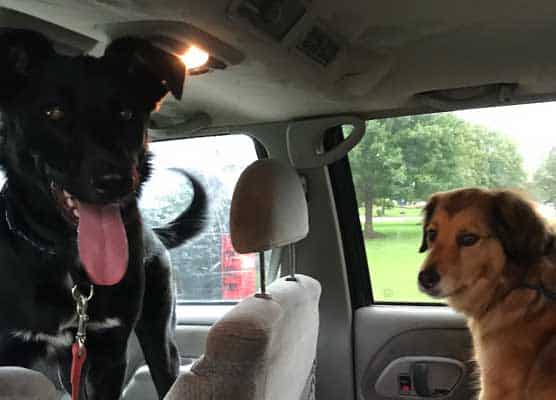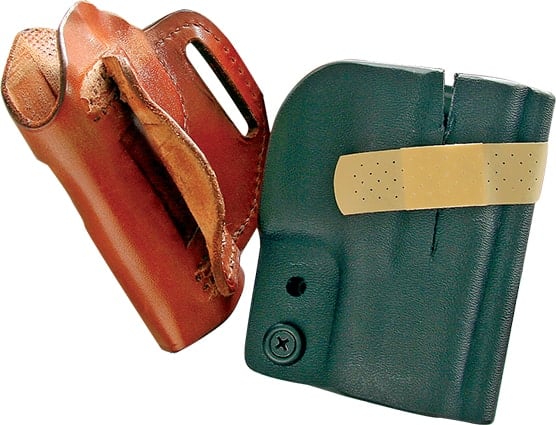When Master Instructors
Cross-Pollinate
More than a decade ago, I was en route to my first of many of the Rangemaster Tactical Conferences, sponsored annually by master instructor Tom Givens and his lovely wife Lynn, an ace instructor in her own right. On the way, shooting champion and trainer Andy Stanford told me Tac-Con was something like the International Association of Law Enforcement Educators and Trainers or the International Association of Law Enforcement Firearms Instructors but open to civilians. I’ve never been able to quibble with that well-deserved accolade.
In late 2023, Givens arranged another type of brainstorming session. Only veteran instructors were invited, about three dozen of us, and the format was that a handful would address topics in firearms/deadly force/threat management training and then lead a roundtable discussion of the given matter by all in attendance. I found it to be an outstanding “train the trainer” learning experience, and with Tom’s permission would like to share some highlights here.
Lane Thayer
Lane Thayer of the Iowa Law Enforcement Training Center spoke on Teaching in an Over-Stimulated Culture. He emphasized the importance of letting recruit and in-service officers alike know “what’s in it for them” at the beginning of an instruction bloc. Involvement is key: “Get your people into small study groups,” he advises, adding, “Things like ‘you can win a challenge coin on this drill’ get them to focus.” He points out, “If a student can tell me the differences between two reloading techniques, they’ve shown me they understand what we’re teaching and why.” Thayer is a huge proponent of the Socratic method, a two-way dialogue between teacher and student.
John Hoelschen
Next up was John Hoelschen on Integrated Visual Processing in Firearms Training. Heavy military experience and a long and successful training career have convinced John that a visual stimulus to draw and/or shoot takes the average person a quarter-second to a half-second longer to process than an auditory signal. “It’s not about speed of working the gun, it’s about speed of perception,” he said. He added most people think they can draw and fire faster than they actually can.
Tim Kelly
Tim Kelly was the youngest key speaker. With a strong “dot.mil” background, he runs Apache Solutions and having trained with him at Tac-Con, I can say he’s a rising star. His topic was The Next Generation of Instructors, and he pointed out the importance of studying what those who’ve gone before us have learned and taught and the results thereof. As pioneering trainer, John Farnam said from the audience, “We have to coach each other.”
Massad Ayoob
My topic was The Instructor’s Role in Testifying for Students. I addressed the successful court strategy of showing the triers of the facts that the defendant did what he was taught to do and what he was taught to do was “in the mainstream of common custom and practice” for dealing with the type of threat at issue, and hopefully even constituted “best practices.” I shared cases where instructors failed to stand up for those they trained and emphasized the importance of documentation of training and having key elements on video.
Steve Moses
Steve Moses teaches for CCW Safe and gave a thought-provoking talk on Designing Relevant Shooting Drills and Tests. He suggested playing a video of an actual shooting that involved the point of the drill, and that prior to sharing with students, the instructor run the given drill with shooters of known skill to help determine realistic speeds and standards for different levels of students.
Erick Gelhaus
Erick Gelhaus of our sister publication American Cop teaches at Gunsite, and his topic was Tactically Suitable and Court Defensible Ready Positions when guns are drawn “on the street.” He went into detail on a study that showed very little difference in response time between gun on target and gun at low ready if shooting became necessary.
In a classic example of the Socratic method in action, one tactical luminary in the audience, Greg Ellifritz, questioned whether a gun pointed at the ground would compel compliance or be interpreted as a Good Guy afraid to point at his opponent, let alone shoot. Erick pointed out that in the test in question, “low ready” meant pointed at or just below the bottom edge of the torso/head target, the equivalent of the pelvic aim I’ve always taught for gunpoint, and I, for one, found that reassuring and validating.
Mark Fricke
The final speaker was Mark Fricke, who had a big part in raising NRA Police Instructor training to the high standard it enjoys today. He spoke on Teaching Challenge Commands for LE and Citizens. Mark pointed out that “Show me your hands!” can be a stupid thing to shout when those hands might be holding guns, and how one Good Guy yelling “Don’t move” while another yells “Raise your hands” can have tragic undesirable consequences.
The above just touches the surface of the shared brain trust we all enjoyed at the Professional Trainers Symposium, held at the excellent Royal Range facility in Nashville, Tenn. Many thanks to Tom Givens for making it happen and allowing us to share it with American Handgunner’s readers.
For more info: Rangemaster.com, ILEETA.org, IALEFI.org, InsightsTraining.com, ApacheNC.com, MassadAyoobGroup.com, CCWSafe.com, Gunsite.com





